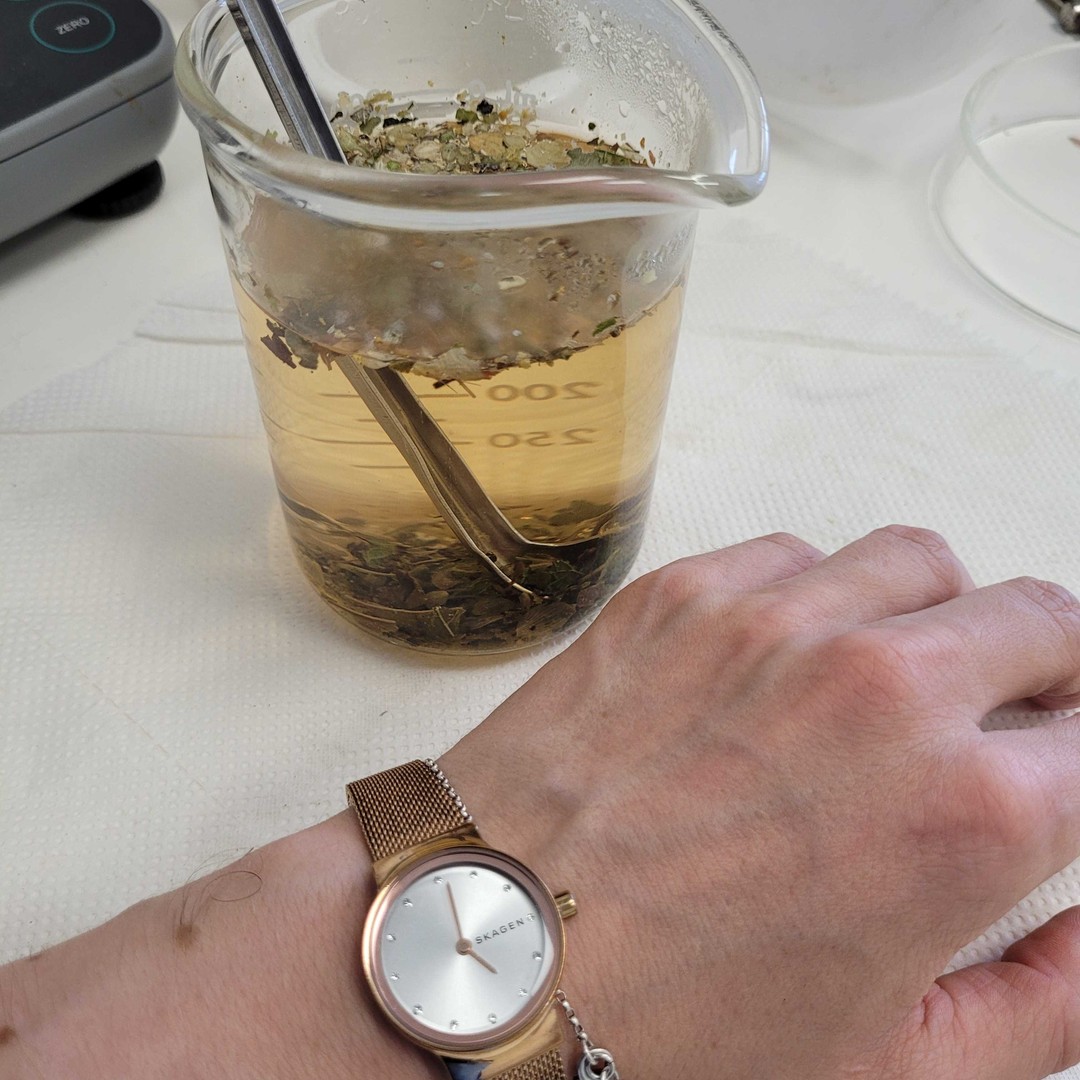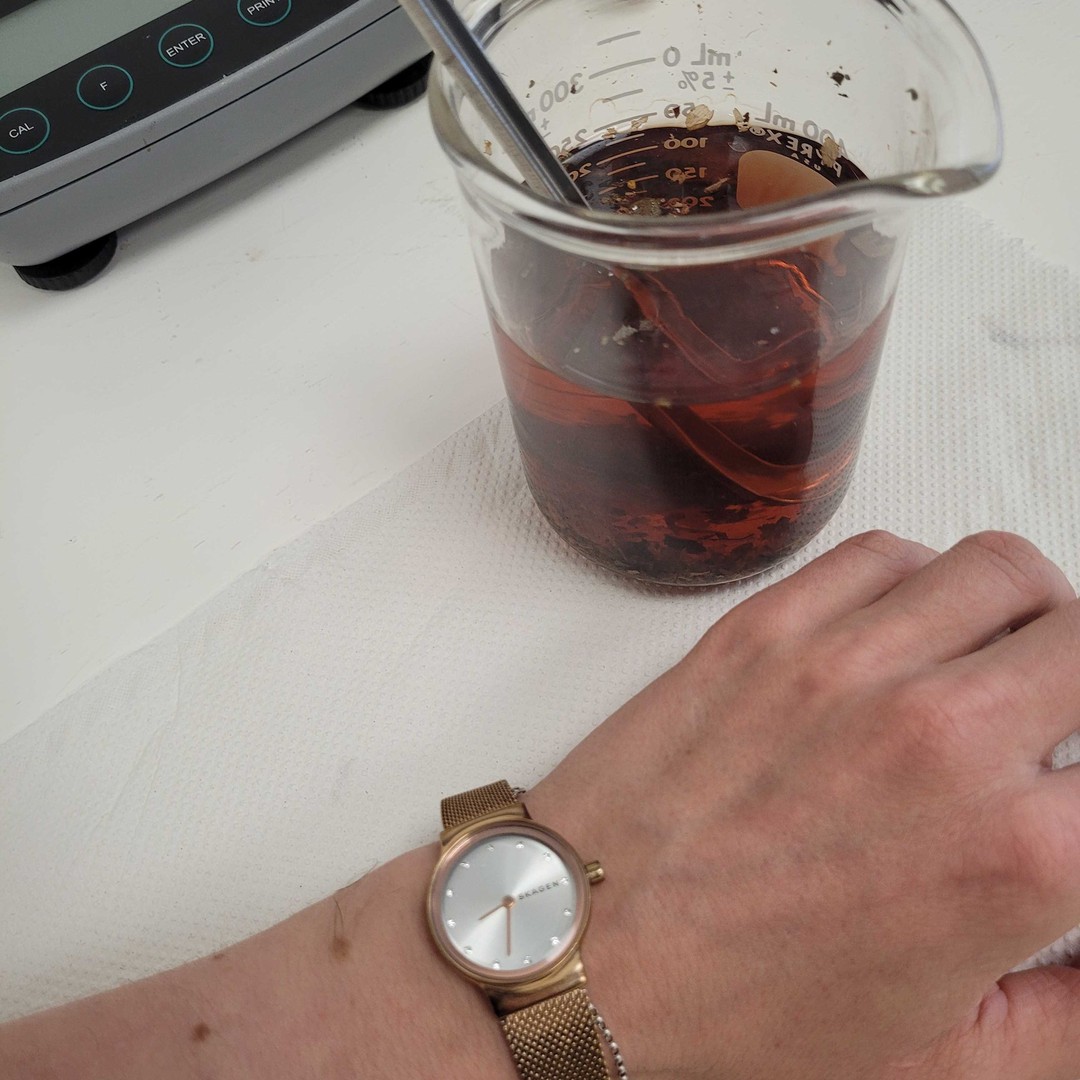What do tea and cosmetics have in common?
In order to answer this question, we need to delve into a story behind plant extracts.
Plant Extracts in Cosmetics
There are so many different plant extracts in cosmetic products that I don’t know where to start. So I’ll begin at the beginning.
In the beginning there was a plant. And the people discovered that this plant was good – it had a positive effect on their skin.
They took the plant and rubbed it on their skin to make it look and feel youthful and healthy. This was a lot of work and not very comfortable.
Then some of the plant fell into some water. The water became dark and smelled just like the plant. So the people put some of the dark water on their skin. Lo and behold, their skin felt youthful and healthy. They had created the first extract.
One of the people, who enjoyed a cup of tea, suggested to soak the plant in hot water. And Behold, the water became even darker.
But soon, they found that after sitting around for a day in the warm environment, the dark water extract began to stink. Then it became sour and putrid. The people did not want to put it on their skin. Soon, they developed dry skin, wrinkles and pallid complexions. The people were not happy.
One clever person left some of the dark water extract in the hot sun. It soon dried to a powder and did not stink, become sour or putrid. The people had an idea: they could dry the dark water extract and dissolve it in water whenever they wanted to rub it onto their skin and feel youthful and healthy.
And so it was done.
Modern people began to use things other than water to extract the plants. Alcohol works very well and extracts other parts of the plant (the non-polar) than water (the polar) alone. Vinegar helps to extract other components of the plants. The science of extraction has grown into a scientific field that has been studied for centuries and is called (to some extent) pharmacognosy. During the last century, the chemical industry began its campaign to poison our environment and our bodies with toxic chemicals. People learned how to make powerful extracts using dangerous chemicals, such as hexane, acetone and methyl ethyl ketone. Theoretically, the toxins have been removed, but trace amounts can still remain. Either know your extracts, or buy organic.
Today, there are two basic types of plant extracts:
- those standardized to a certain amount of a plant component
for example, extracted to 50% polyphenols and - those processed to achieve a specific extraction ratio.
for example, extracted such that 10 kg of plant yielded 1 kg of extract (10:1). That’s a relatively high ratio and indicates a very powerful extract.
Both have their advantages and disadvantages. The most exact is the standardized extract. You know exactly what you are getting. However, in the process, you may lose much of the non-standardized components of the plant and it could lose much of its holistic benefits. Depending on the amount of the standardized component in the raw plant, you could need more or less of the plant to make the same amount of extract. This could depend on annual climate fluctuations, soil concentrations, amount of sunlight, etc.
The ratio extracts are always made to a specific ratio, regardless of the plant quality. These are much more common because they are easier to make and much less costly. They are more likely to have the natural holistic composition of the plants and their benefits could surpass those of their standardized cousins.
The story becomes much more complicated because highly concentrated extracts are very dark, often have strong odors and could even be aggressive. Most cosmetic manufacturers use highly diluted extracts to avoid the colors and smells. Here is an example.
Make a cup of tea. You use approximately 1 g of dried tea leaves in 300 ml of hot water. This is certainly not a standardized extract, but a ratio extract. It would be a 1:300 extraction ratio (0.33%), which according to our discussion above, is a very weak extract. If you dried this cup of tea, only a few tiny spots of brown sediment would be left on the bottom of the cup.
This is what is left over after 12 hours in the incubator.
Now, let that tea sit overnight and it becomes almost as dark as coffee. Most cosmetic manufacturers would not like to use a dark extract that turns their bright white cream to a coffee brown. Most consumers would not want to put that on their skin. So now they have to dilute this even more. In fact, the cosmetic ingredient manufacturers know this well and they will dilute it even further. The typical commercial extract for cosmetics (made like our tea example above) has been diluted again to 2% – 20%. The amount of plant now in the extract is now down to 0.0067 – 0.067%. Now the cosmetic manufacturer will use this extract at about 5% of the formula. The plant amount has now dropped to 0.0003% – 0.0033%.
And yet, the label on most cosmetic products does not indicate anything about the extract strength.
 |  |  |
| Result after 1 minute | Result after 5-10 minutes | Result after over 12 hours |
The Dorith Kosmetik® Advantage:
Having the basic knowledge of extraction processes has given us a great advantage over our competitors. We know what to look for and keep an eagle eye on our extract manufacturers. We use only extracts made from natural solvents that pose no health or environmental harm. Our extracts are made from either organic or wild crafted herbs. We use extract strengths that have been shown to have clinical activity to ensure that our loyal customers get the health benefits they can expect from Dorith Kosmetik®.

